Patricia Renee’ Thomas was sure that she would be a visual artist. Captivated by words and originally enamored with drawing — she would write and illustrate her own stories in book form and perform them for her mother — it wasn’t until her entrance into Temple University’s Tyler School of Art that Thomas fell in love with the paintbrush. But painting never felt like an option to Thomas before college. When she entered the painting department at Tyler School of Art, she noticed that there were no black women painters that she could think of immediately. Of course, she was versed in Caravaggio, Michelangelo, and the likes, but why was her knowledge of black women painters so limited? Why weren’t more black women painters given a platform so that young black women artists like Thomas could connect with their work?
Plagued by this realization, Thomas committed herself to the medium and was determined to make the work she wanted so that black women painters who are interested in painting black people know that there is space for them. Thomas unearthed the painting style that she has become most well-known for, and proudly began depicting the intricacies of her relationship with blackness. Thomas’ work explores historical references of blackness to further investigate her environment. As a black woman, she recontextualizes the classic portrait and typical portrayal of beauty through the lens of the other. In her brand new show, Grapejuice, Thomas is fascinated by the preparations of being a “presentable” black woman, and how doing hair is a universal experience of black female performance. Although having one’s hair braided is a seemingly simple experience, it is succinctly tied to notions of beauty, norms, identity, and race. The works in the show reflect on Thomas’ experience with hair and braids, and the connection to beauty and identity. For Thomas, the actual process of painting is very similar to this process of preparation. Braiding can sometimes take days, just like painting. Both processes take time and are, to some degree, attempts for perfection.
Patricia and I chatted before her show opening at Kapp Kapp Gallery in her hometown of Philadelphia, where she told me about the meaning behind the show’s name, Grapejuice, and how she can’t help but feel a responsibility to carve out space for younger black women artists.
Give me a little bit of background. Where are you from originally? Tell me a little bit about your upbringing.
I was born in Philadelphia but was raised in what we call the county. It is right outside of Philly. It is an urban environment disguised as a suburb. That’s where my parents chose to raise me and my sisters. They are both from Philadelphia and chose to live outside of the city in an attempt for us to get a better education and access. Philadelphia 25 years ago was a lot different than Philadelphia now and they weren’t optimistic about the city. I’ve always had an interest in art, and I know that’s the typical thing that every artist says, but I really have. I have always been drawing and tracing. I even used to do this thing — and I wonder why I don’t do this anymore — but I would make books. I would write and illustrate my own stories. Then I would perform them for my mother and my elementary school librarian. That was the beginning of this need to tell stories and this need to make images.
I eventually went to this high school that had this kick-ass art program, even though everything else was bad. It was huge, it was Upper Darby. Four-thousand students, for a high school, it’s overwhelming. It kind of prepared me for the culture shock that is living in a city or being alone in a city.
How did you decide to go to Temple University? In what ways was your decision to attend Temple’s Tyler School of Art based on the things you know you wanted to accomplish in your work and the surrounding community?
I applied to a bunch of art schools; all of them were either in Philadelphia or in urban settings. I never actually considered going to an art school that was in a rural place. I felt this need to be in the city. It was Tyler that not only offered the city, but offered contemporary knowledge. All the other schools provided classical knowledge, and while Tyler did as well, they had a large emphasis on the contemporary. Little did I know, the very alumni that graduated from Tyler are some of my favorite painters and drawers — Trent Doyle Hancock, Jen Packer. Little did I know that Tyler was already supporting these viewpoints of black thought. 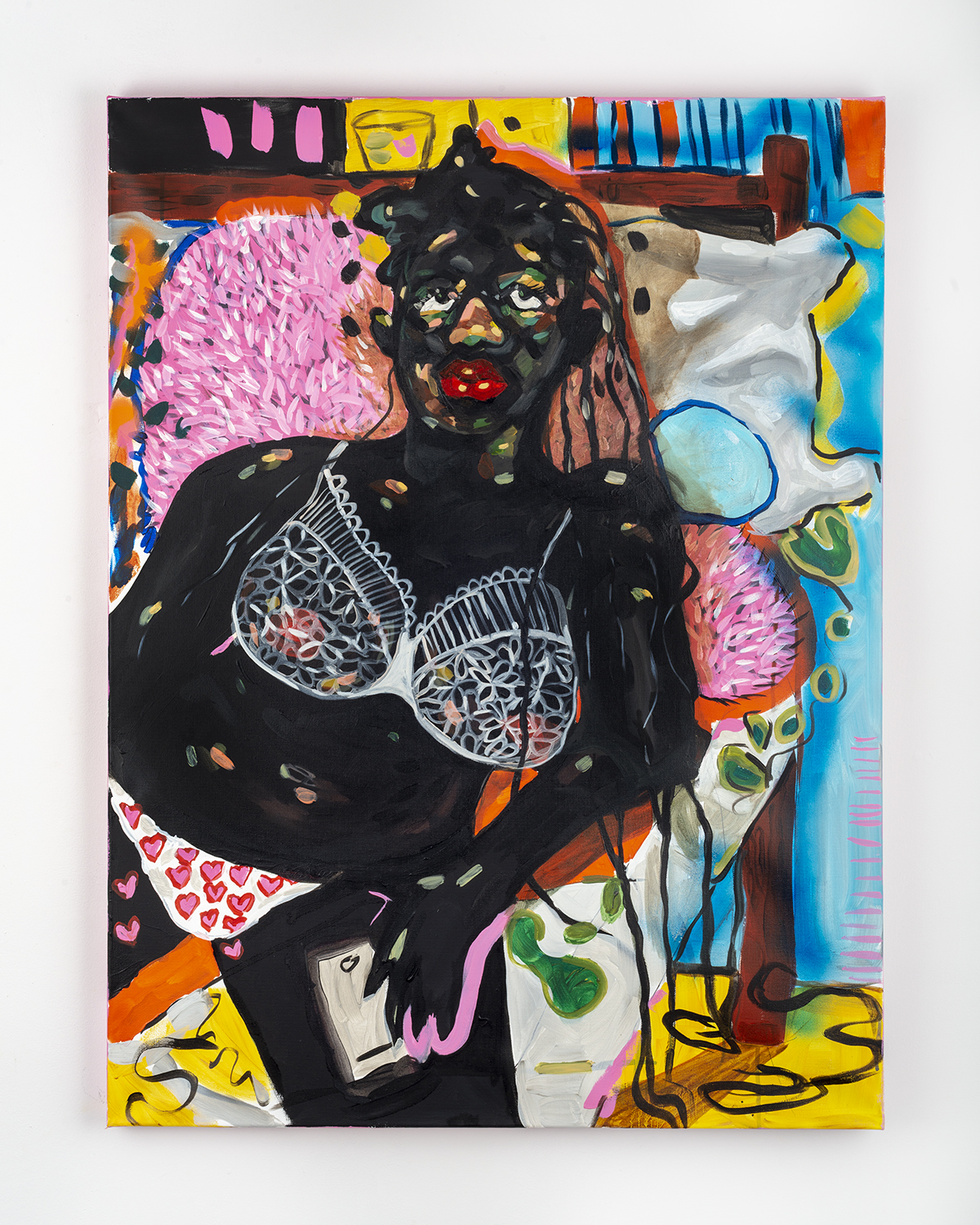
During that time, when you were deciding where to go to school, were there any black female artists that you felt you could relate to or were inspired by? Or was it kind of bleak?
It was pretty bleak actually. The only black female artist that I was aware of and very much liked, was Kara Walker. I had never seen a black female artist be as big as a black male artist because at the same time I was learning about Kehinde Wiley and Kerry James Marshall. It was 2013, but there wasn’t a public force of black art. It was also the phenomenon of my last name being Thomas. I walk into the school and they’re like, “Well do you know who Alma Thomas is? Do you know who Mickalene Thomas is?” And I didn’t, but it spurred this sense of camaraderie with these other black persons and it made me feel like I wasn’t alone in this world of wanting to create art and be myself.
Tell me about the work you were creating while at Tyler, School of Art. Was it similar to what you’re making now?
It was a start. What I’m making now was born at Tyler. I was doing a lot of research and taking black studies classes because I went from a public school system where we didn’t read DuBois, to college where I could be provided with a world of black history and knowledge. These things weren’t accessible. It’s kind of a joke now when we say “woke” but when the word “woke” was used the most back ten years ago, it was true. So many of us black Americans didn’t know our history — not in the way that we didn’t know we were slaves — but rather the intricacies of it. So this awakening happened with access to the internet and access to college for many of us. I started my journey of understanding the intricacies of this relationship with blackness when I was able to access these ideas and thoughts in college. 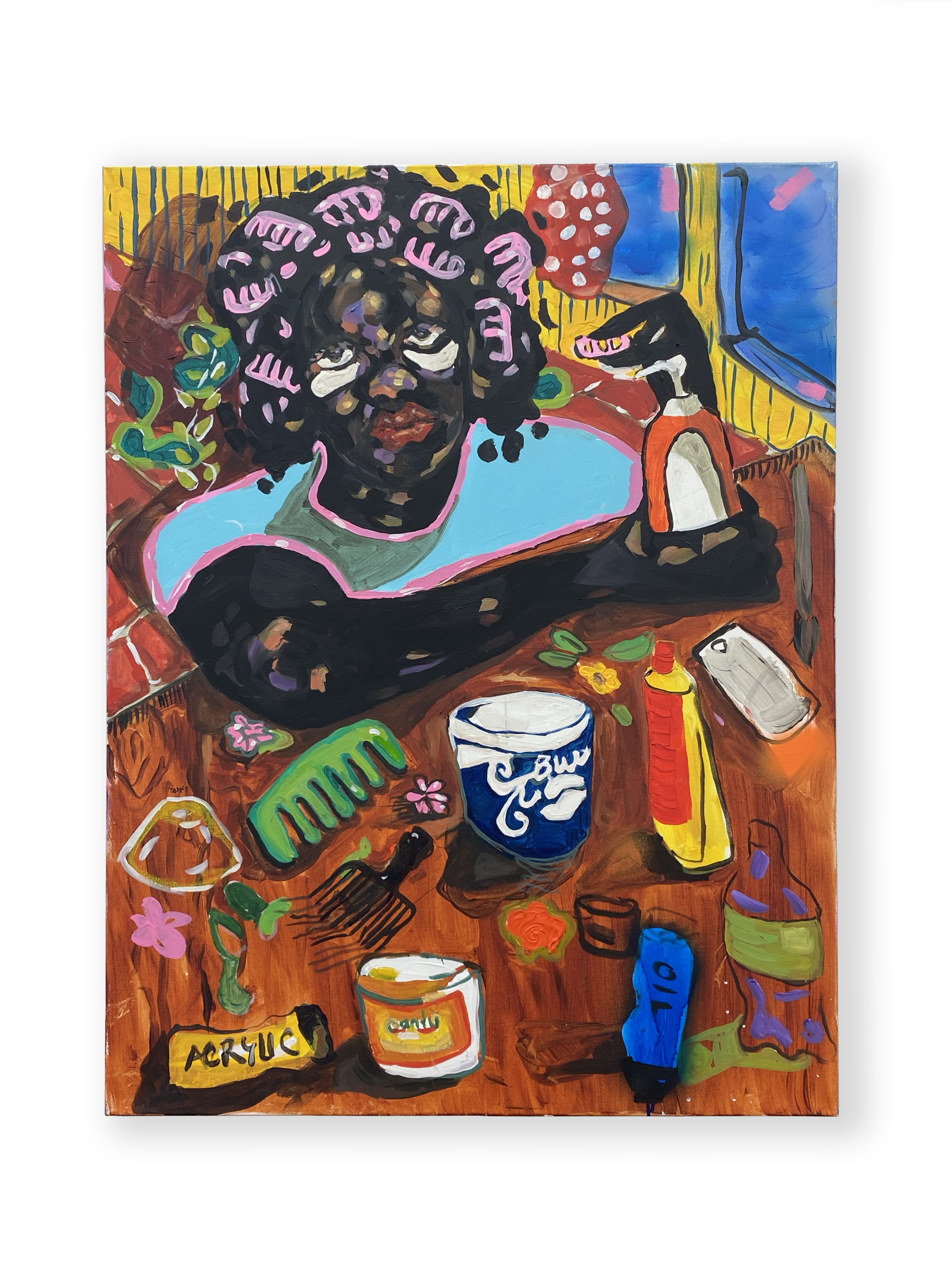
My first few black paintings were almost in rejection of the blackface images I found. They were in my dreams and I thought about it all day and I just painted a lot and painted the images. They would also emerge — and I think this is kind of funny — we would paint still lifes, and there was this project with one of my professors where she would make us paint the same still life over and over from memory. By the third one, I was painting these black figures in the dark spaces. It’s like they would just show up. Then I got obsessed to the point where — we had a lot of white models that we would paint — I had requested from one of my professors to paint the model black. I got a resounding no, but at the end of the class, when there were a few moments left, I picked up an oil board and did it anyway. After that, I requested a semester of independent study to explore and work on this. It was my last couple of years at Tyler that gave me the things that I needed to think about the things that I was thinking about — literal blackness, what does it mean in painting to be anything? Painting has so much to do with beauty and making something beautiful and I was interested in making these beautiful images by something that has been otherly defined as ugly. I was interested in the layers it presented. 
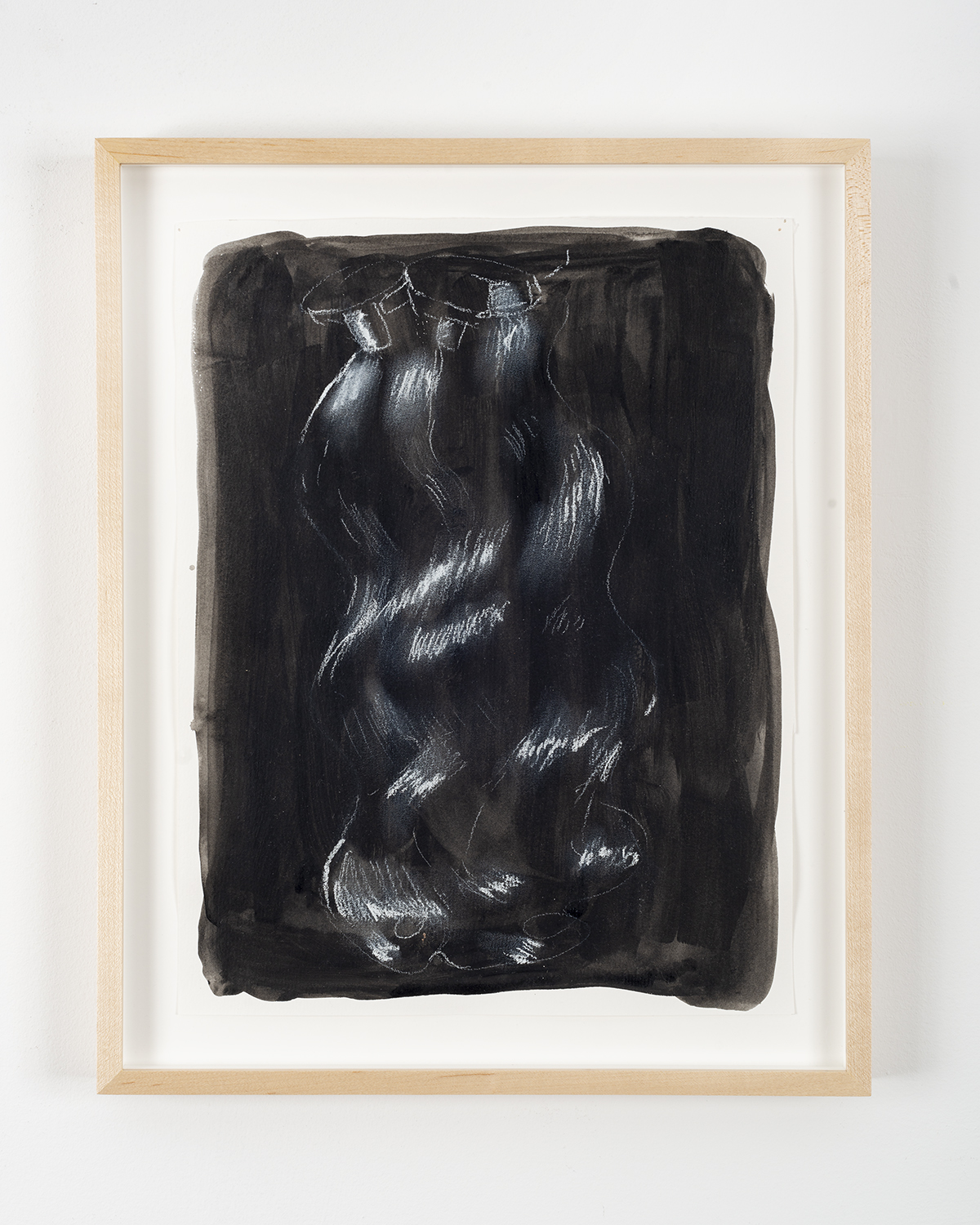
After graduating from Temple, you’ve spent time teaching at nonprofits in North Philadelphia. Tell me why you found it important to give back to the communities that you inhabited while attending Temple.
Temple is this university that is planted in the middle of the North Philly. North Philly has a reputation. Rumors all over the country have stories of what West Philadelphia was based on what North Philly was. It’s a lovely community. This incident happened where someone was attacked by some young group of girls in Philadelphia. It caused more distrust between the Temple community and the actual community that lives, and works, and breathes, and goes to school there. Something that was always problematic is the word, “the locals,” it was this derogatory term, “the locals,” and I remember one night it was a late campus night and there was this part of campus that doesn’t necessarily look like campus but it is, and I was coming back from my studio and Temple students crossed the street to avoid me. It was a moment that I realized more specifically that it was a color and classicism thing, and I am just as much a part of “the local” until I put on a Temple University shirt, or until I prove myself, one of them.
Particularly after this moment, even just with my time living and going to school there, I found North Philly an interesting part of the city that influenced my work. It was an area that I thought was just as important to my education as Temple was. So after leaving, my first thing was to find non-profit work. I was looking for an entryway into teaching. Instead of taking a fifth-year certification, I took the route that felt right to me. I knew of an organization that’s called Art Sanctuary and we had the same ideals. I had requested to work in North Philly and did so in two different locations. It was incredible and the most refreshing way to return what I took. I took up space being at Temple and I took up information — I was a sponge. I used an incorporated Philadelphia life in my paintings and it felt right. The kids were unbelievably talented and they just needed someone to encourage them.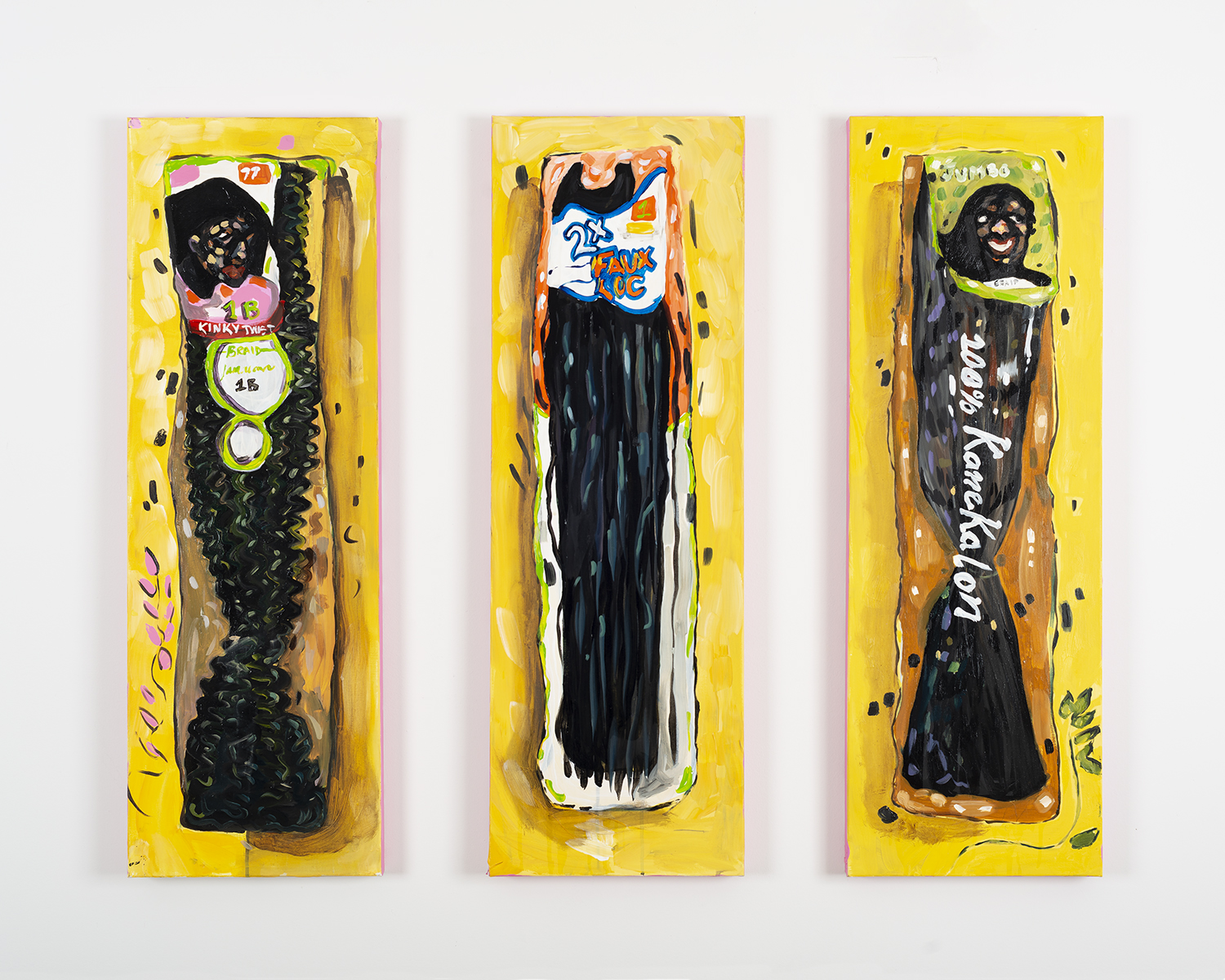
Tell me a little about your new series of work for your upcoming show, Grapejuice, and how you came to that name for this body of work?
I am a painter and I am very interested in the process of painting, specifically what painting does and means. I am also interested in the self, and the self in the form of preparation, and the form of preservation, and the form of performance, especially as a black woman. We go through so much to prepare ourselves and to perform ourselves so we can be a presentable thing and body; that has a lot to do with hair. The show does approach other aspects of preservation and preparation, like skin, but there is an overall theme of hair and the time it takes to do that and to also do a painting. So I am thinking of painting and doing my hair, and the preparation of myself, as the same thing. Grapejuice is a meeting line between the two because I actually drink it a lot. It’s a nostalgic thing, it’s a current thing, I drink it when I’m getting my hair done, when I’m taking my hair out, when I’m making a painting. It’s also this nostalgic thing of when I would sit on the floor and my mother would do my hair. That’s what we would get as a reward for sitting there for four hours. It’s a reward system that I still maintain. I think painting is this delicious thing, so I am also associating the sort of sensation I get when painting with the sensation of the drink.
I’m interested in this idea of these preparations being “attempts for perfection”. I too am a woman of color of both Mexican and Armenian descent. And I feel like most women of color, in some way or another, have always felt this need to physically or emotionally fit themselves within a social framework crafted and defined by whiteness. Can you elaborate on this idea of braiding your hair and other preparations that you see as “attempts for perfection”?
There’s a part of my paintings that manifests in rejection of our definitions of perfection. I paint quite messy, and I used to paint perfect bodies, and they were usually these perfect white bodies or white portraiture in sort of this connection or reach to the perfect image. I am always kind of breaking that down. My style of painting is literal broken down color and broken down painting concepts to something as basic as drawing. I tend to draw and outline my work, which is kind of funny because as a teacher I’m like, “No, no, no outlining.” But then also to provide them with the option of perfection. When it comes to the self, everyone’s goal is to be perfect and to be beautiful. The paintings show that perfection is already in place. A lot of the paintings are messy and the subjects that are shown are in the process of perfection. So in one piece, she’s wearing an under-eye face mask, or her hair is half done or half taken out. So much of these paintings are playing with the idea of the finished image and the finished look. I’m not sure if I’m blasting the perfection or if I’m breaking it down. 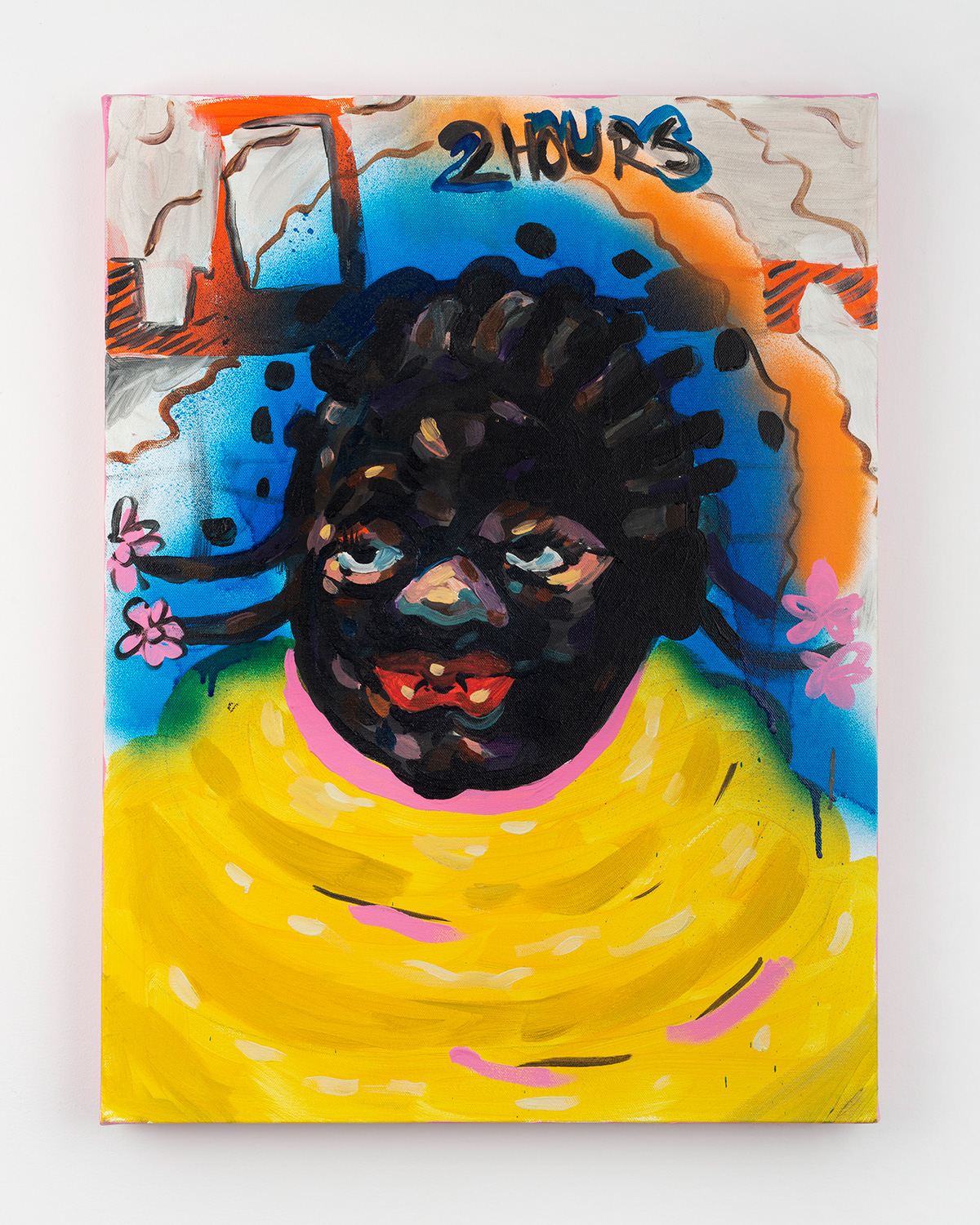
Are most or all of the subjects in these painting women? Where do these subjects come from? Are they people you know or meet?
Everyone is a woman in this show. All of these paintings are inspired by myself or my sisters as of lately. My sisters are the people that I draw and paint the most; they are extensions of myself and vice versa. All my sisters, we all have this camaraderie as a unit. This unit of sisterhood I take quite literally; you can kind of think of the sisterhood that happens between other black women. I’m still investigating this relational idea of blackness and the camaraderie of it. Before I was painting strangers, but there was a disconnect. No one knows a stranger, and what’s really happening when I paint strangers is that I am dumping my perceptions of them onto the image. It didn’t feel right. It felt like an investigation that was not finished. It felt like I had too much power. So painting myself, which is always a positive thing, painting my sisters, the way I know them best, it starts a nice roll into depicting all women or most women, who I feel are familial with me. The images are inspired by myself and my sisters.
How many sisters do you have?
I have three sisters.
Was your father overwhelmed by the amount of feminine energy around him?
Yeah, and it’s crazy, my father was a Marine. He’s this intense masculine figure, who loves guns, loves beer, and it’s quite interesting seeing him now. He still maintains so much of his previous self but he’s surrounded by four daughters, his wife, all of our pets were female. 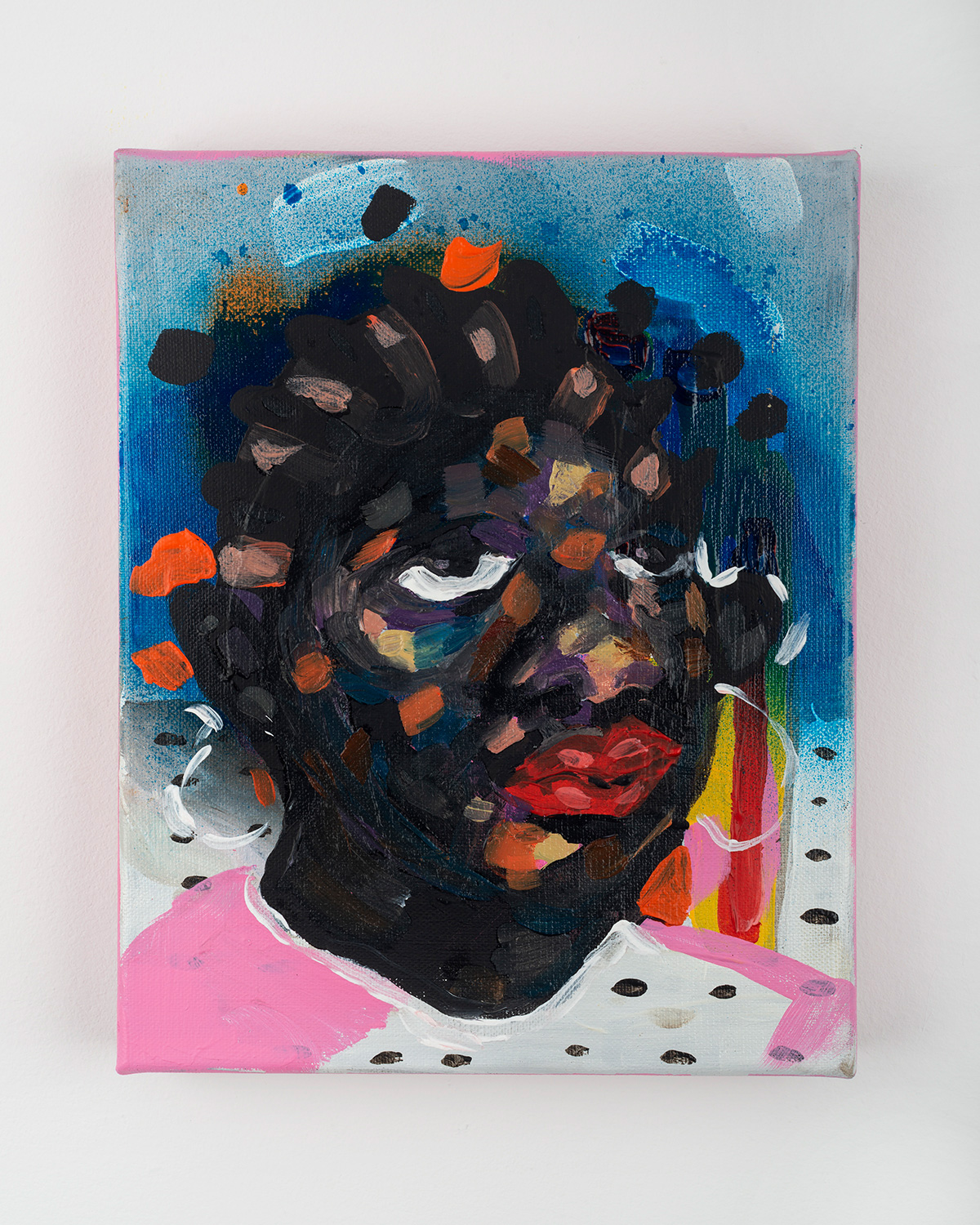
In what ways is your mark-making purposeful in contributing to the overall message and meaning of your work?
I was trained to paint and at some point, I rejected this idea of this smooth, milky skin. And even the painters I adored — I loved Peter Paul Rubens, Caravaggio, Michelangelo — most early painters have fidelity to what we call the “Old Masters,” which I think is a problematic term. I realized I didn’t want to do that anymore and started to diverge into depicting literal blackness, which is abstract because nobody’s skin actually looks that way. And even those who chose to depict the abstract thought of skin, they never took it that far. Eventually, I fell into my love and understanding of contemporary black makers. But literal blackness is interesting and a fantastic way of depicting ourselves. Kerry James Marshall does this quite well. I was more interested in the true aspects of painting and what our skin actually does; it’s this reflective surface, unlike lighter skin tones of people that absorb light. When I teach a lesson on painting noses and ears I have to talk about how light passes through. Our skin very much reflects and becomes this spirited thing. I was interested in the theory of being multifaceted. So in all of my pieces, the bodies and faces are literally black, but they include a multiplicity of color. It’s an investigation of painting but also an investigation of personality and independence and being unique and being perfect, equally perfect as the figures in Caravaggio. I feel I can make equally powerful imagery with new considerations of the body through paint. I’m interested in being very specific about the objects being a part of the image as what surrounds us, equally as important as who we are.
So much of your work is centered around and interested in the process of creating art while black. What does that process entail? And what does it mean to “create art while black”?
This is something I have been thinking about a lot lately. There’s a layer of protection that I have been providing myself with. There’s an intense commodification of black experiences, specifically in black art. So as of recently, I’m curious how much of myself and how much of what it means to be a black creator, I should provide to the public. I know that is a weird thing to say, because as an artist you give people everything, but I’m wondering if my experience should be neater, and so much of it, especially pain and trauma is so valued. With that being said, I also feel a great sense of responsibility. I kind of went into school with education about a handful of contemporary black thinkers and it was just that handful that made me think, “You know what, this is possible.” When I was in school, this kind of black art boom didn’t happen yet. And there’s this responsibility there because I am fully aware that the next generation of artists is looking at me. It becomes two things. At one point I was curious if that meant I didn’t have the freedom I thought I could have because of my responsibility, but I realize that was a fallacy. So much of the world creates art about themselves in culture with also having the pleasure of still talking about additional things that they want to talk about. All of my work is based on blackness, but it’s not exclusively about blackness. 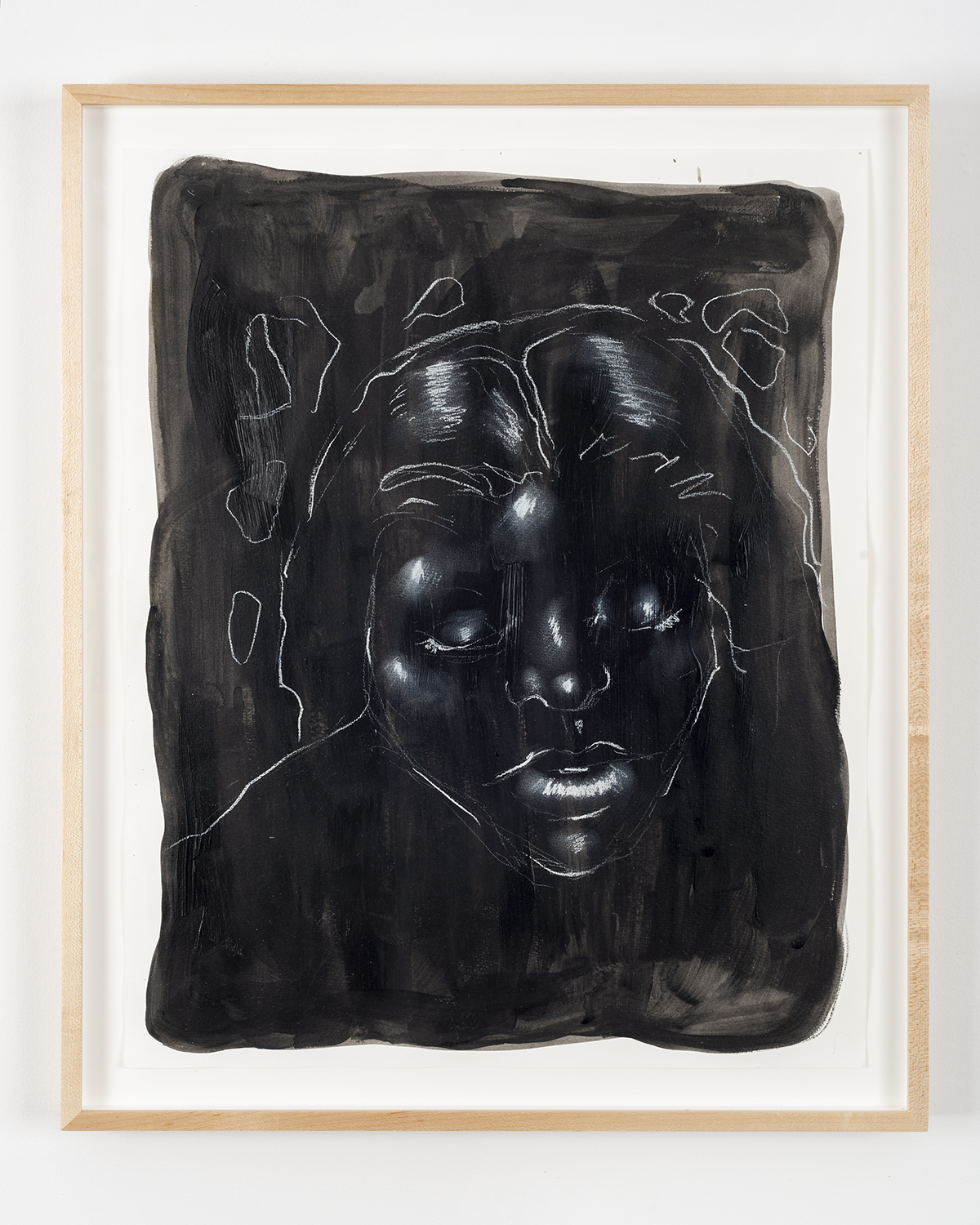
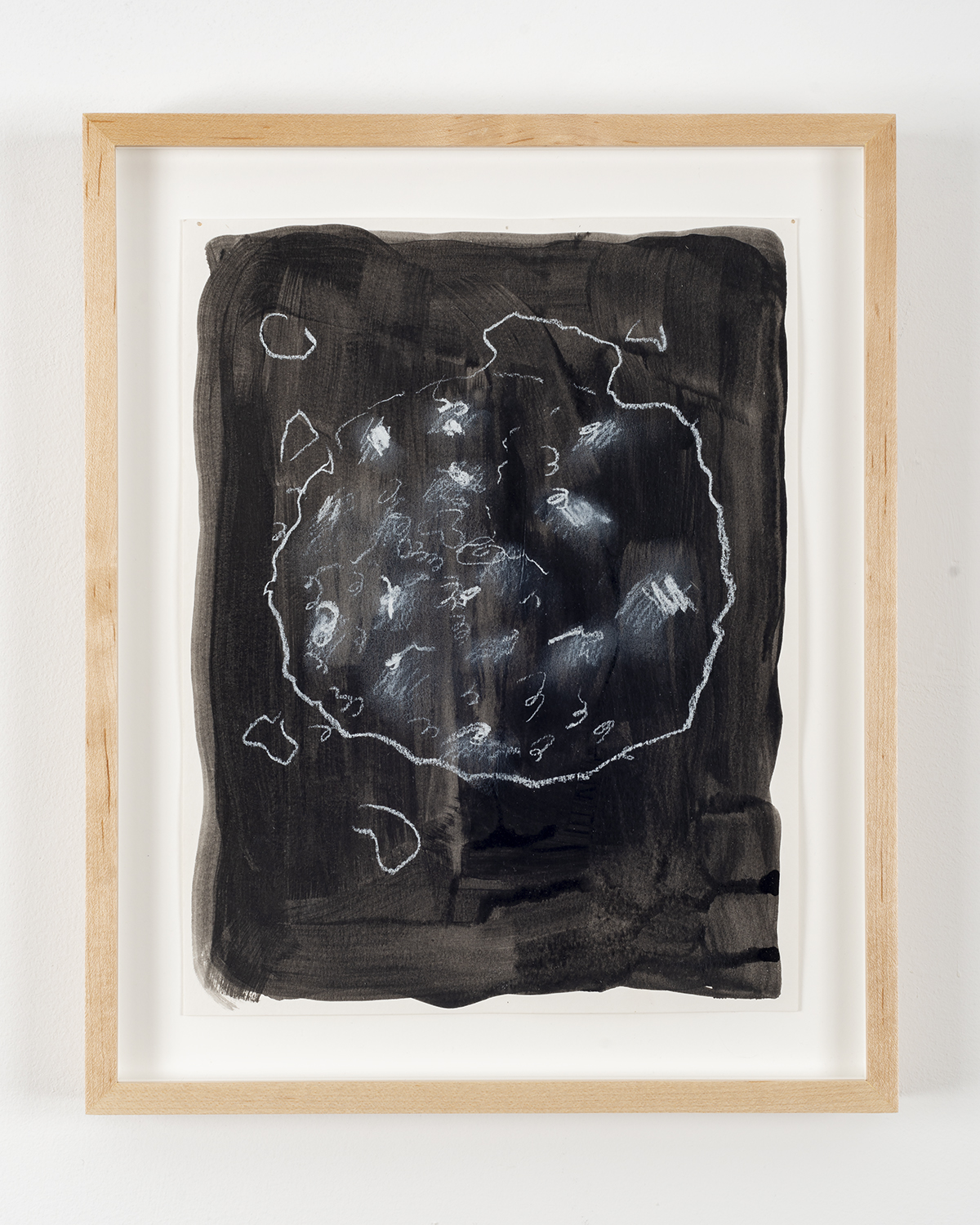
How do you think you and your work are carving out space for young black women in the visual arts? Do you feel that responsibility?
Yeah, I do. I’ve been told I’m a baby artist because I’m only 24. And by all means, that’s young to start an art career. Frankly, I love it. I love to make work, so it’s not a painful thing to do. I don’t feel like I’m taking on too much, not at all, because all artists are constantly making. So having the opportunity to share it is great. Also, the internet is a thing, Instagram is a thing, so I have groups of young friends that are seeing this is not something you have to wait for. I always think about one of the very first black female artists that I knew about, Alma Thomas, and how she had to wait her whole life to be validated and she had to die to be put into museums, you think of that and I think about the implications of having been a woman making incredible work but having to die to be recognized is something quite common for female artists. So there is some responsibility that comes with being a young woman artist who is working right now. It’s also this rallying cry that forces galleries and collectors to look at other female artists. There is a huge need for us and a lot of space for us. We’re just carving out space as we go and changing the narrative of how long it takes to be successful and what it means to be a woman artist. It’s nice to be living it and to motivate other incredible young female artists to live it as well.
For more from Patricia Renee’ Thomas, follow her on Instagram.
Exhibition photos courtesy Kapp Kapp Gallery, photography by Chad States. Artist portrait courtesy of the artist and Kapp Kapp Gallery.
